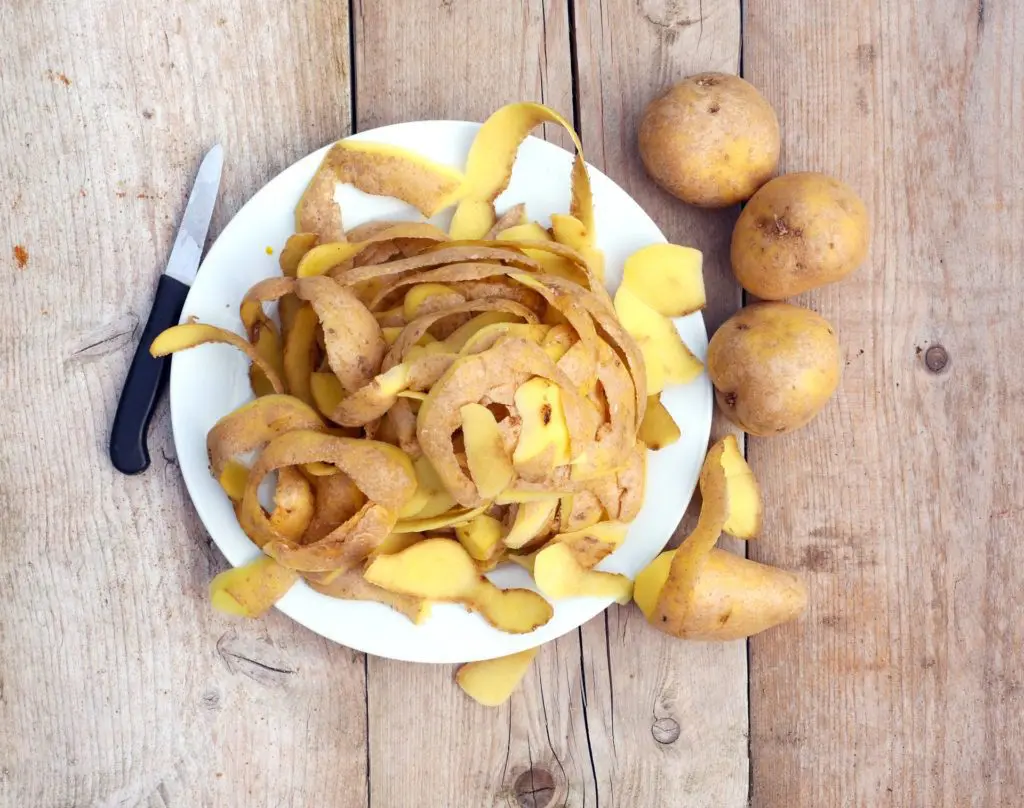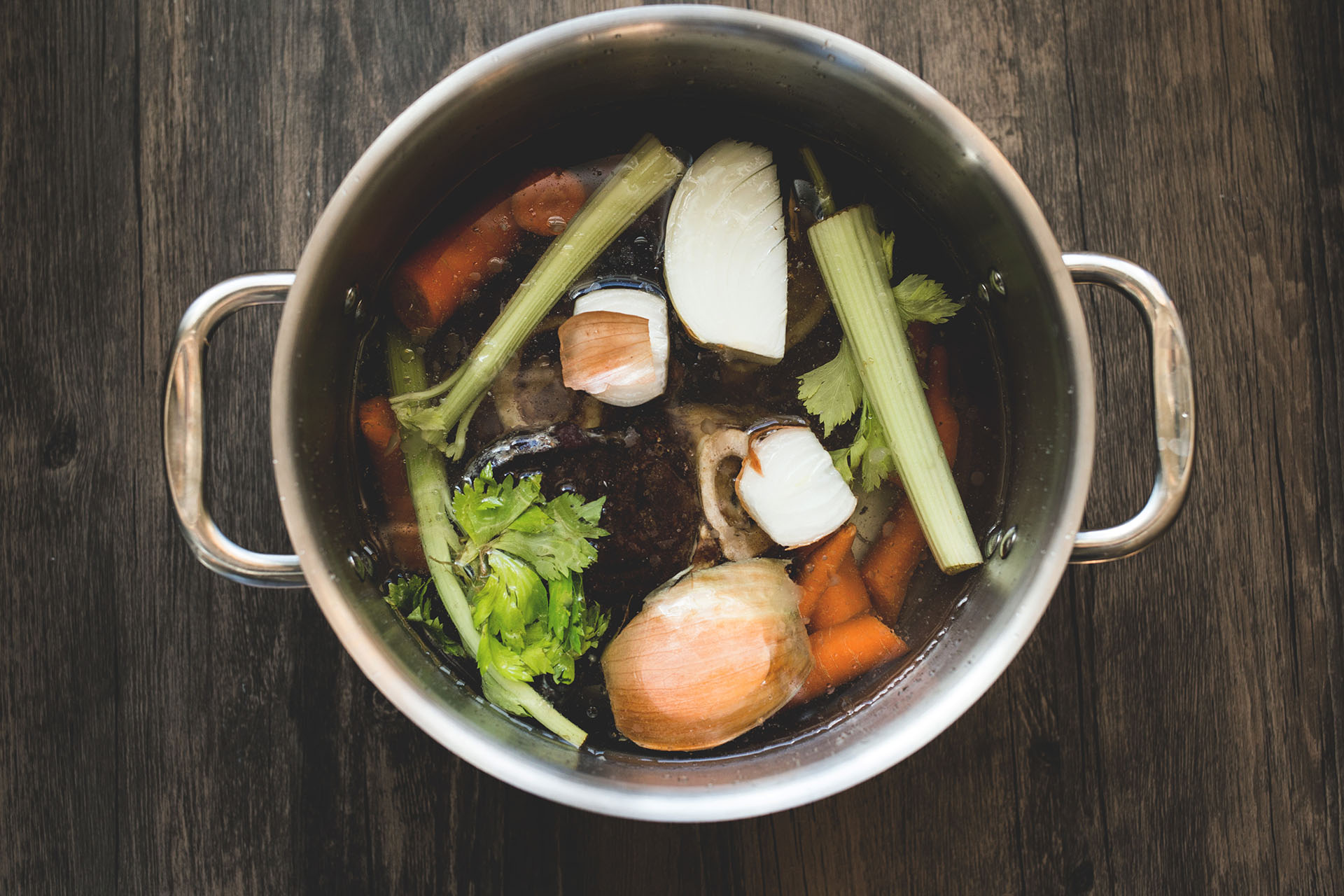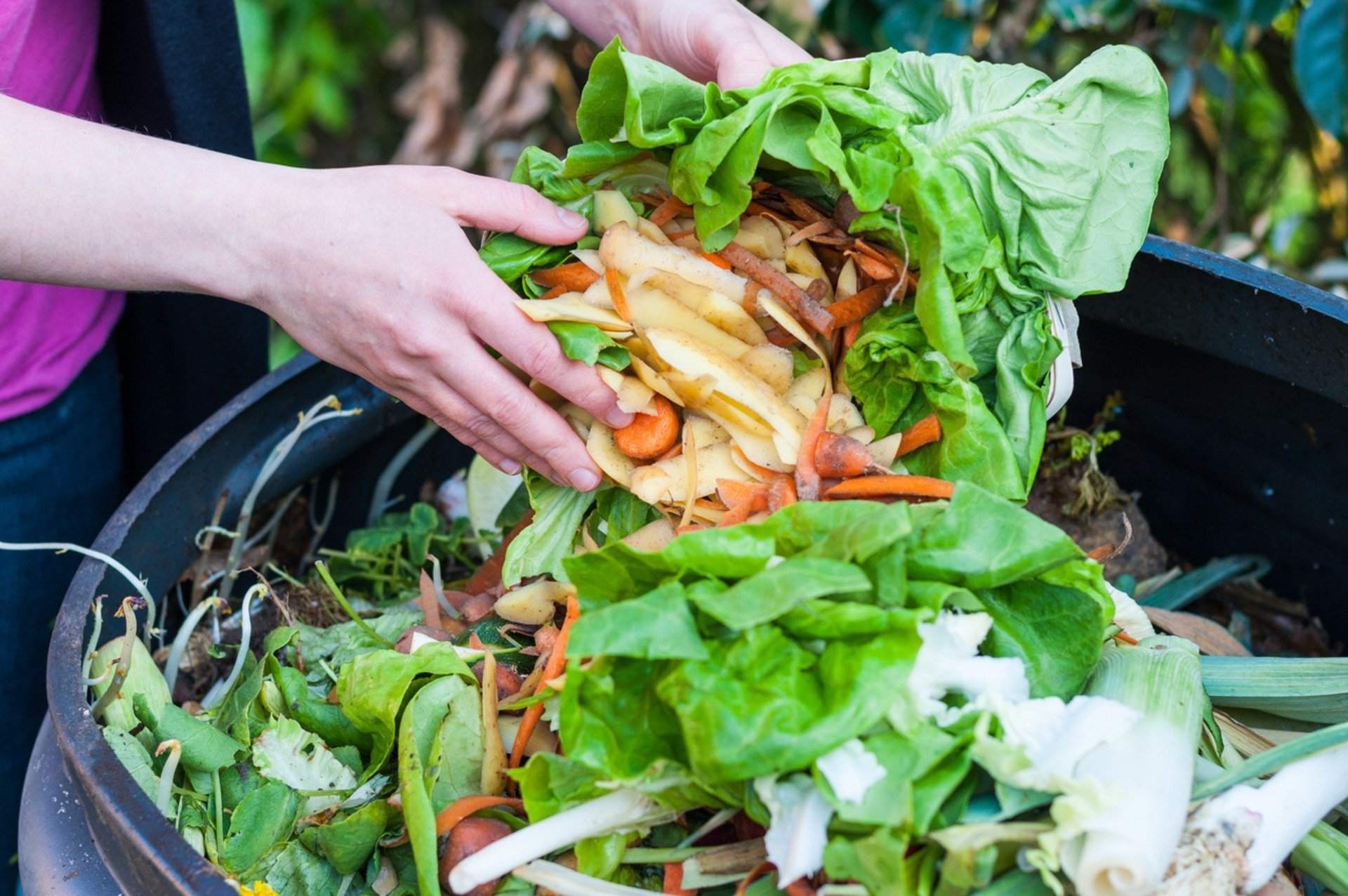Zero Waste Cooking: 17 Ways to Reduce Food Waste in the Kitchen
Food waste is a big problem: up to 40 percent of the food in the US is uneaten and the average household of four throws away an estimated $1,350 to $2,275 per year in wasted food. One way to approach the problem of individual food waste is to strive for zero waste cooking in the kitchen
The first steps for reducing your food waste are making a plan, getting organized and shopping smart. The next step — zero waste cooking — means approaching food completely differently, as if the trash can doesn’t exist. Think smart. Get creative. Use parts of ingredients in ways you haven’t before. Instead of throwing them out, saute leaves, steep leftover herbs in hot water for tea, dehydrate peels to create spice mixes. With a little extra thought, everything can be used. Here are just some of the hundreds of ways you can use every part of your food.
Cook Every Part
Zero waste cooking starts with the obvious: eat every part of the ingredient you’re cooking with. This is nose-to-tail, root-to-stem cooking. Cookbooks like the James Beard Foundation’s “Waste Not” and Abra Berens’s “Ruffage” have a lot of inspiring ideas on how to do it. Here are some others to get you started.
Use stems
The leaves of vegetables like Swiss chard and kale are often removed from the fibrous stem (sometimes called the rib) before being chopped, to make cooking faster. But the stems are also edible. Chop them up and saute, add to soups or puree into smoothies. Similarly, fennel stalks and broccoli stems (also called stalks) can be roasted, grilled and sauteed. The firmer texture of broccoli stems is great for making coleslaw, an easy toss-in-whatever-you’ve-got recipe.
Use greens
Bunches of radishes, daikon greens, turnips, beets and other root vegetables are often sold with the greens still attached. These greens have so many uses. Toss them raw into salads, saute them, make them into kimchi, or swap them into recipes that call for spinach, like this goat cheese tart with beet and turnip greens.
And if you have salad greens that are slightly past their prime, think beyond the salad bowl. Use them for pesto, juice or stir fry to keep them out of the trash.
Use fronds and leaves
Just like greens contain precious flavor, so too do the leaves. Don’t toss those celery leaves or carrot or fennel fronds away! Use them like you would parsley in salads, soup, risotto and other recipes. Carrot tops and parsley leaves are great for adding zing to pesto, while this fennel infusion adds the herbaceous anise flavor of the vegetable to vodka, using the whole plant.
Use seeds
And don’t forget about the seeds when you are cooking pumpkin or squash! Roast them and use in sauces, salads, baked goods and desserts; our favorite way to use them is this pumpkin seed chocolate bark.

Use peels
So many fruits and vegetables are peeled that don’t need to be: carrots, potatoes, apples, peaches, the list goes on. But if you are committed to zero waste cooking and committed to peeling your food — whether for texture or preferred color of the finished dish — use those peels! Just make sure you give your fruit or vegetable a good scrub before peeling. Bake potato peels into crispy chips, dehydrate apples into a sweet snack, or chop cucumber peels into tzatziki sauce.
Use the Ends
When you think you’ve already used every edible bit: you might still be overlooking one final use! We heard from many readers who feed carrot tops to their dogs as treats. Parmigiano ends (or rinds) can be used to add flavor to soup or broth.
238 pounds
The average amount of food wasted per person every year in the US.
Preservation 101
Another key to zero waste cooking is keeping ingredients from going bad — if you aren’t able to cook them in time, focus on preservation.
Love Your Freezer
There’s a reason that a common food waste tip is to make the freezer your best friend: freezing ingredients stops the ripening process in its tracks. You can freeze fruits and vegetables to use at a future time; to store prepared foods for later; or use the freezing process to “cook” them for now. Freeze bananas or grapes into “popsicles”; store pesto or stock in ice cube strays for ready-to-go servings; or blanched vegetables, milk, yogurt and other items to use later.
Befriend the Dehydrator
Another great way to give your food long-lasting shelf life: the dehydrator. Have too many hot peppers? Dry them out to make your own chile powder. Picked too many apples? Slice thin and crisp them into chips.
Don’t have a dehydrator? You can dry many ingredients out in an oven set at the lowest temperature.
Properly Pickle
You can’t pour piping hot pickling liquid over everything, but if handled the right way, there’s very little that can’t be pickled, from eggs and chile peppers to more fragile celery leaves and berries. This recipe will help you master the basic refrigerator pickle, which can be kept in the refrigerator for weeks; process your jars with a water bath canner to make them shelf-stable.
Jam
Cooking fruit or vegetables down into jam can be another good way to preserve items that are at their peak, before they head into the trash zone. Here are a few simple recipes for refrigerator jams, but if you use a water bath canning method, it’s also a great way to keep food preserved for a long time.
Throw Nothing Away
The true secret to zero waste cooking is ignoring the trash can and finding a use for everything, from onion peels to avocado seeds — you just have to look for it.

Make Stock
Toss any scraps you can’t find a way to use — onion and garlic peels, herb stems, carrot tops — into a bag in the freezer. When it’s full, make stock. Just remember to wash any visible dirt off the ingredients before tossing into the scrap bag, and strain the stock afterwards.
Make Puree
Turn overripe fruit like bananas and berries into puree. Can’t use it right away? Freeze it or turn it into fruit leather.
Infuse Flavor
Do you find mushroom stems too woody to eat? Or prefer to eat apples without the peels? Instead, use those parts for infusions. Corn silk can be dried out and used as a tea. Any ingredient with aromatic flavor — an herb, fruit, vegetable — can be for a secondary use to create infusions, tinctures or extracts. This includes items like strawberry and citrus tops, which are often tossed away. After they’ve been used for their flavor, toss the ingredients in the compost.
Of the estimated 125 to 160 billion pounds of food that goes to waste every year, much of it is perfectly edible and nutritious.
Use It Twice
And if you really want to master zero waste cooking, don’t just use something, use it twice. Reusing spices, herbs, peels and other ingredients to flavor or infuse gets the most out of them.
Zest
Citrus zest that’s been dropped in a glass of water or cocktail can have a second life: rinse off the zest, and use it again to infuse into vinegars, for a household cleaner, or olive oil, great for marinades.
Peels and Cores
Apple peels and cores can also do double work. After using the peels and cores to infuse into vinegar or liquor, you can cook the cores down into a mostarda (after removing the seeds), or rinse the peels and use them as a pot cleaner.
Compost
Once you’ve used your ingredients as far as they will go, toss them into the compost bin. Use our guide to composting to make sure you are doing it right.
Don’t Forget the Non-Edible Parts!
Just because items like banana peels, egg shells and citrus seeds aren’t usually included in the salad bowl, doesn’t mean they can’t be part of your zero waste cooking approach. Many of these ingredients have secondary, non-edible uses. Here are few to keep in mind:
- Banana peels can be rubbed on bug bites to take the itch away.
- Eggs shells can be used as an abrasive for scrubbing pots and pans or crushed into soil as a nutrient-dense fertilizer.
- Use dried out corn cobs as pot scrubbers or as a replacement for wood chips when grilling.
- The tough outer tops of leek greens can be used like banana leaves to wrap foods before cooking or steaming.
- Citrus seeds can be used to make pectin.
- Avocado pits can be sprouted into house plants, and are also a traditional ingredient in Northern Mexican enchilada sauces.
Get the latest food news, from FoodPrint.
More Reading
The ins and outs of vegan hot dogs
April 16, 2024
7 books about onions, garlic and the wide world of alliums
March 13, 2024
Eat seasonally this winter with persimmons
January 18, 2024
Commit to sustainable habits with our Reduce Your Foodprint Challenge
December 18, 2023
9 homemade preserves to gift (or keep) this holiday season
December 12, 2023
Get creative with these food preservation methods
December 1, 2023
Meatless Monday: The first 20 years
November 1, 2023
Why 2023 is the International Year of Millets
October 5, 2023
Eat more grains — and keep it local
September 29, 2023
When it comes to sustainable spices, 'single-origin' isn’t everything
September 8, 2023

